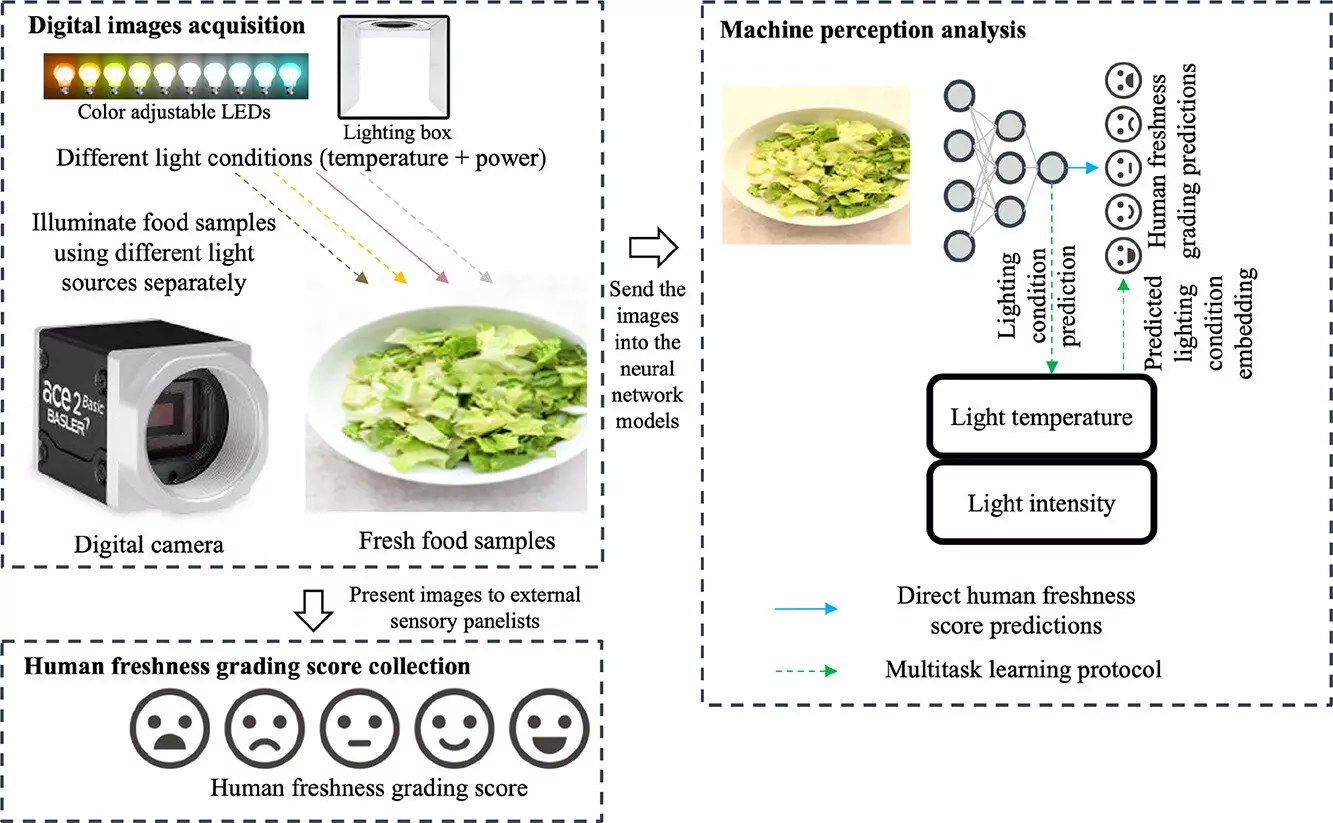The quest for superior food quality assessment continues to evolve, particularly as technology advances and our understanding of human perception deepens. Imagine standing in a grocery store aisle, attempting to select the freshest apples while wondering if there’s a technological solution that could guide your choice. A promising area of research led by a team at the University of Arkansas seeks to blend human sensory evaluation with machine-learning techniques to achieve enhanced food quality predictions. This innovative approach may not only influence individual consumer choices but could also reshape the food industry’s operational dynamics.
Understanding Human Perception in Food Quality
Human perception plays a pivotal role in determining food quality. Factors such as lighting, color temperature, and even personal biases can significantly impact how we assess products. The Arkansas Agricultural Experiment Station study, led by Dongyi Wang, has classified how these human assessments can be collected and channeled into machine-learning algorithms. Unlike rigid machine-learning models, which can fall short in varying environments, human evaluators are inherently adaptable. This adaptability enables humans to accurately discern food quality, taking ambient conditions into account.
However, this variability introduces a challenge: how to quantify and standardize these impressions for machine learning to effectively understand them. The study highlighted the necessity to evaluate human reliability before training machine-learning models, acknowledging that differences in individual perception must be taken into account. By exploring the nuances of human evaluations, researchers aim to create algorithms that hold a mirror to our innate capabilities.
The research utilized Romaine lettuce as the focal food item, capitalizing on its visual attributes, which can vary drastically under different lighting conditions. To create a robust dataset, researchers photographed lettuce samples over eight days, capturing images that reflected varying degrees of freshness and browning. In total, 675 images across different illumination scenarios formed the foundation of the study. A diverse pool of 109 participants—none of whom had color blindness or vision impairment—were enlisted to assess these images over several sensory evaluation sessions.
Each participant ranked the freshness of the lettuce on a comprehensive scale, generating rich data reflecting human perception influenced by lighting conditions. This empirical evidence was essential not only for understanding consumer behavior but also for informing machine-learning models that could ultimately predict food quality with remarkable accuracy.
The Machine Learning Advantage
The true innovation lies in how the gathered human perception data is incorporated into machine-learning models. Traditional algorithms often rely on a limited set of parameters, frequently failing to consider the nuanced effects of diverse lighting conditions. However, Wang’s research has shown that by leveraging the human insights gained through sensory evaluations, prediction errors in determining food quality can be minimized by around 20 percent. This leap in accuracy is significant, proving that integrating human perceptual data enriches machine-learning processes and creates a more reliable system for food quality evaluation.
The researchers employed various well-established neural networks to evaluate the same lettuce images rated by sensory panels, thus training models that emulate human grading. This hybrid approach highlights the potential of machine learning not merely as standalone technology but rather as a complement to human expertise. This synergy could be transformative, offering insights that may reshape practices in grocery stores and food processing facilities alike.
The implications of this research extend well beyond food quality assessments. The methodology established in this study could easily transition into other industries, such as jewelry appraisal or even aesthetic evaluations in fashion. The ability to activate machine-learning systems that mirror human assessments positions this technology as a versatile tool for numerous applications. This is especially vital in consumer-driven markets where perception shapes buying behaviors.
Moreover, the evolution of food technology through this study exemplifies a broader trend within the industry toward employing sophisticated tools to optimize product presentation. By harnessing insights from both human and artificial intelligence, vendors can enhance their product offerings, ultimately leading to increased consumer satisfaction and potentially lower food waste due to better quality assessment.
The integration of human perceptual data and machine learning presents a pioneering frontier for food quality evaluation. As researchers continue to refine their methods, we can anticipate a future where selecting fresh produce becomes as simple as checking an application, revolutionizing the grocery shopping experience.


Leave a Reply